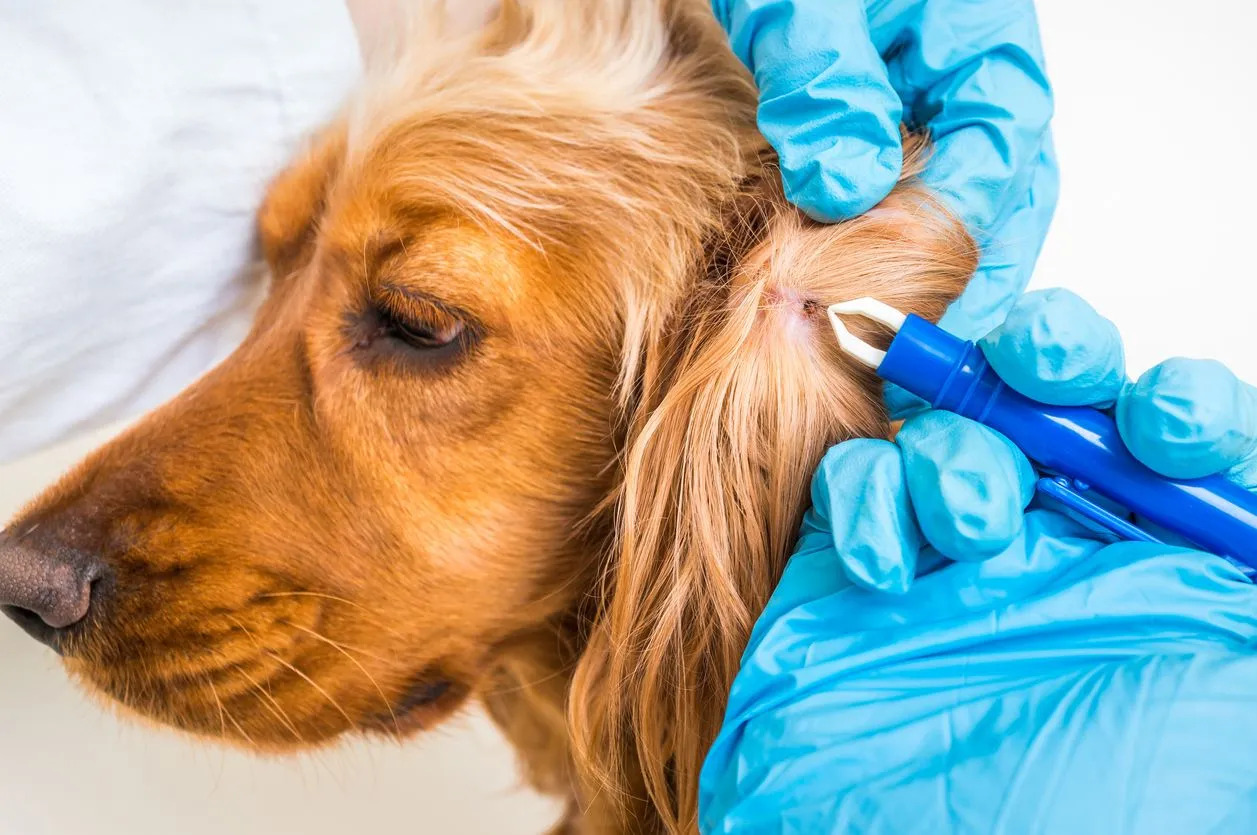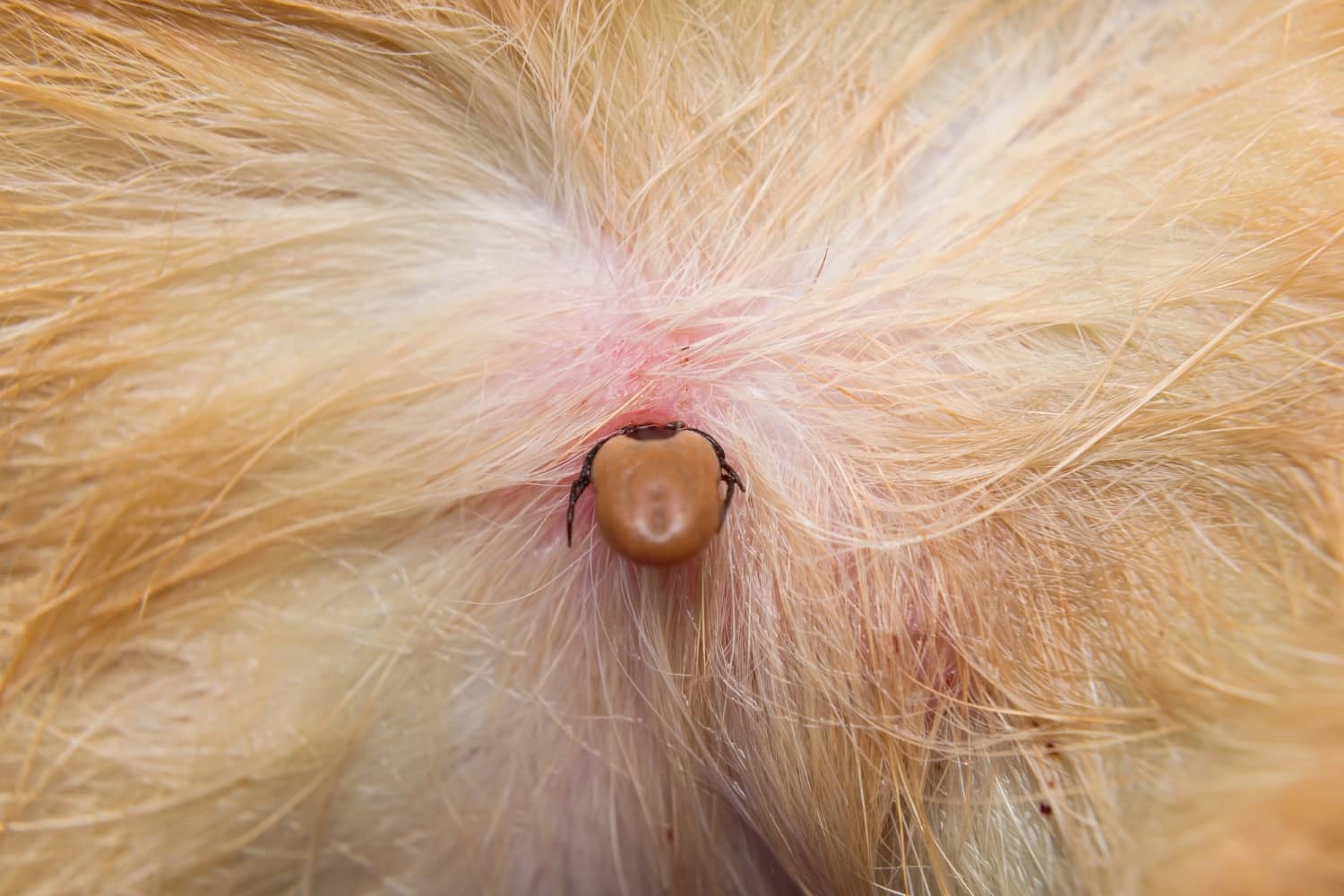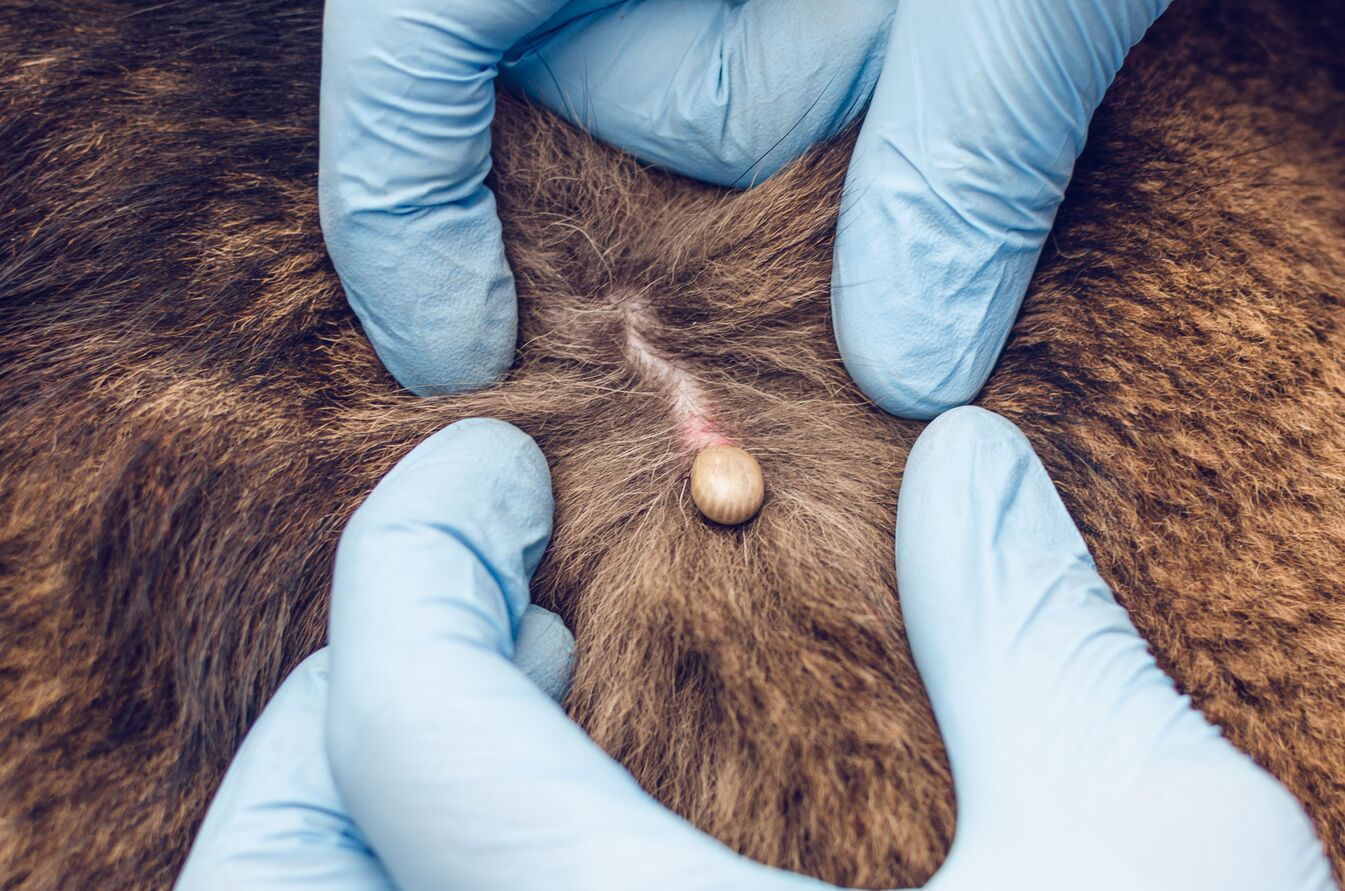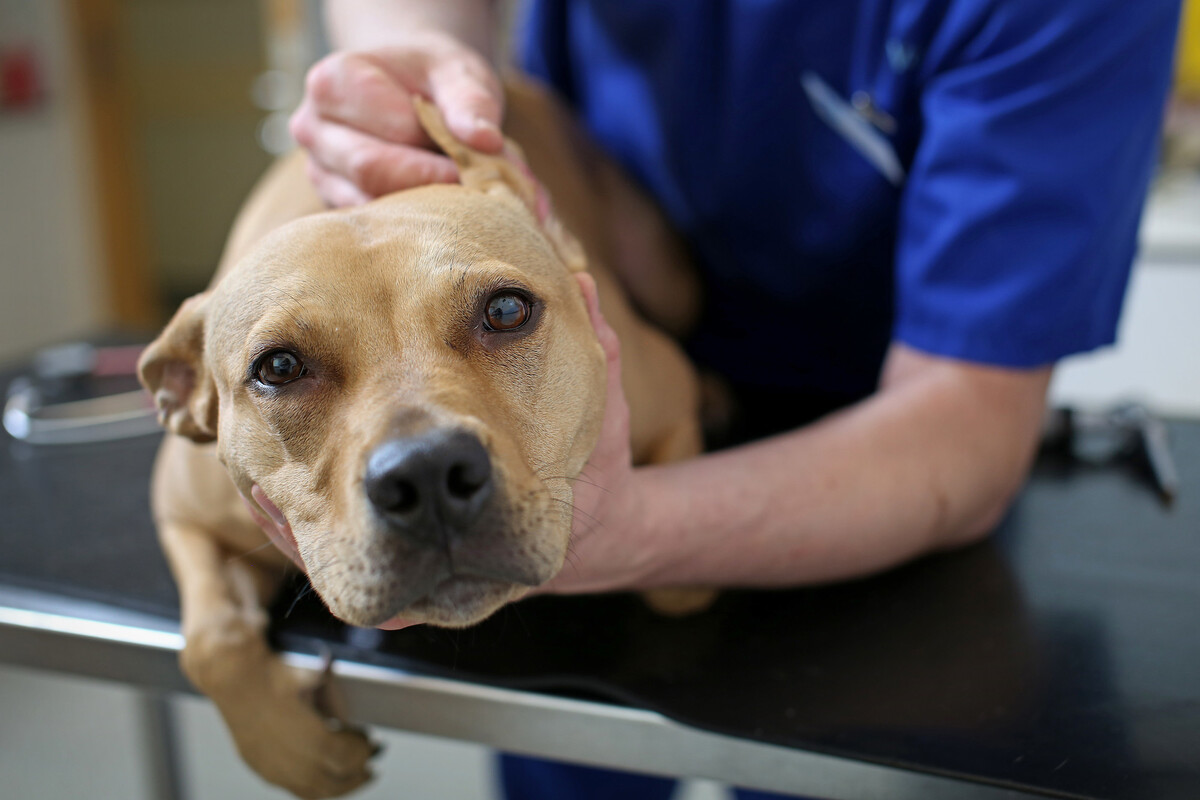Home>Health & Wellness>Common Health Issues>What Do Parasite Eggs Look Like In Dog Poop?


Common Health Issues
What Do Parasite Eggs Look Like In Dog Poop?
Modified: March 1, 2024
Learn about common health issues in dogs and what parasite eggs look like in dog poop. Understand the signs and symptoms to keep your pet healthy.
(Many of the links in this article redirect to a specific reviewed product. Your purchase of these products through affiliate links helps to generate commission for Pawsomeoldies.com, at no extra cost. Learn more)
Table of Contents
Introduction
Parasite eggs in dog poop are a common concern for pet owners and can pose health risks to both dogs and humans. Understanding what parasite eggs look like in dog feces is crucial for identifying potential health threats and taking appropriate measures to protect pets and family members.
Parasites such as roundworms, hookworms, whipworms, and tapeworms can infest dogs and shed their eggs in the feces. These microscopic eggs are not visible to the naked eye, making it challenging to detect them without proper knowledge and tools. However, being able to recognize the signs of parasite infestation and knowing what to look for in dog poop can help prevent the spread of these harmful organisms.
In this article, we will delve into the world of parasite eggs, exploring their appearance, common types, associated health risks, and methods for treatment and prevention. By gaining insight into this topic, pet owners can take proactive steps to safeguard the well-being of their beloved dogs and minimize the potential impact on their family's health.
Read more: What Does A Parasite In A Dog Look Like
Understanding Parasite Eggs
Parasite eggs are the microscopic forms of various parasitic organisms that can infest the gastrointestinal tracts of dogs. These eggs are shed in the feces of infected animals, posing a risk of transmission to other pets and humans. Understanding the characteristics of parasite eggs is essential for identifying potential health hazards and implementing effective preventive measures.
Parasite eggs come in diverse shapes and sizes, depending on the type of parasite. They are typically too small to be visible to the naked eye, requiring microscopic examination for accurate detection. The eggs are resilient and can survive in the environment for extended periods, contributing to the persistence of parasitic infestations.
Each type of parasite produces distinct eggs, allowing for differentiation under a microscope. For instance, roundworm eggs are spherical and have a thick, pitted outer shell, while hookworm eggs are oval with a smooth outer surface. Whipworm eggs are barrel-shaped and have polar plugs at each end, and tapeworm eggs are often found in packets or segments.
Parasite eggs can be transmitted through various routes, including ingestion of contaminated soil, water, or food, as well as direct contact with infected feces. Once ingested, the eggs can hatch into larvae within the host's digestive system, leading to a new cycle of infestation.
It is important to note that some parasite eggs are more resilient than others and can remain viable in the environment for extended periods, posing a persistent threat to the health of dogs and humans. Understanding the lifecycle of parasites and the characteristics of their eggs is crucial for implementing effective control and prevention strategies.
By gaining a deeper understanding of parasite eggs and their potential impact, pet owners can take proactive measures to minimize the risk of infestation and protect the well-being of their beloved dogs and family members.
Identifying Parasite Eggs in Dog Poop
Identifying parasite eggs in dog poop is a crucial aspect of maintaining the health and well-being of both pets and their human companions. While parasite eggs are not visible to the naked eye, there are several indicators that can help pet owners recognize the potential presence of these harmful organisms in their dog's feces.
One of the primary signs of parasite infestation in dog poop is the presence of visible segments or proglottids, which are indicative of tapeworm infestation. These segments resemble small grains of rice and may be observed in the feces or around the dog's anal area. Additionally, the presence of live worms in the feces or around the dog's hindquarters is a clear indication of parasitic infestation.
In some cases, the texture and consistency of the dog's feces can provide valuable clues about potential parasite eggs. For instance, the presence of diarrhea, mucus, or blood in the stool may signal the presence of certain types of parasites, such as hookworms or whipworms. Furthermore, changes in the color or appearance of the feces, including a pale or off-white hue, can be indicative of parasitic infestation.
While these visual indicators can raise suspicion of parasite eggs in dog poop, microscopic examination is essential for accurate identification. Veterinary professionals can conduct fecal tests to detect the presence of parasite eggs, allowing for targeted treatment and preventive measures. By analyzing a small sample of the dog's feces under a microscope, veterinarians can identify the specific type of parasite eggs present, enabling tailored intervention strategies.
It is important for pet owners to be vigilant and proactive in monitoring their dog's feces for any unusual signs that may indicate parasitic infestation. Regular fecal examinations and preventive deworming protocols can help mitigate the risk of parasite eggs in dog poop, safeguarding the health of both pets and their human companions.
By staying informed about the potential indicators of parasite eggs in dog poop and collaborating with veterinary professionals for comprehensive fecal testing, pet owners can take proactive steps to protect their beloved dogs from the harmful effects of parasitic infestation.
Common Types of Parasite Eggs
Parasitic infestations in dogs can involve a variety of harmful organisms, each with distinct characteristics and potential health implications. Understanding the common types of parasite eggs shed in dog feces is essential for identifying and addressing potential health risks. Here are some of the most prevalent types of parasite eggs found in dog poop:
-
Roundworm Eggs (Toxocara canis): Roundworms are one of the most common intestinal parasites in dogs, and their eggs are frequently found in dog feces. These eggs are spherical and have a thick, pitted outer shell, making them distinguishable under a microscope. Roundworm infestations can pose significant health risks to both dogs and humans, particularly young children who may inadvertently ingest contaminated soil or feces.
-
Hookworm Eggs (Ancylostoma caninum, Uncinaria stenocephala): Hookworm infestations can lead to the shedding of eggs in dog feces, which are oval in shape and have a smooth outer surface. These microscopic eggs can survive in the environment and pose a risk of transmission through skin contact or ingestion. Hookworm infestations can cause anemia and gastrointestinal distress in dogs, making early detection and intervention crucial.
-
Whipworm Eggs (Trichuris vulpis): Whipworm eggs are barrel-shaped and have polar plugs at each end, allowing for their differentiation from other parasite eggs. These eggs are shed in the feces of infected dogs and can persist in the environment, posing a risk of reinfestation. Whipworm infestations can lead to chronic diarrhea and weight loss in dogs, necessitating targeted treatment and preventive measures.
-
Tapeworm Eggs (Dipylidium caninum, Taenia spp.): Tapeworm infestations in dogs can result in the shedding of egg packets or segments in the feces. These segments resemble small grains of rice and may be visible in the dog's stool or around the anal area. Ingestion of fleas or small mammals can lead to tapeworm infestations in dogs, highlighting the importance of comprehensive parasite control.
-
Giardia and Coccidia Oocysts: While not technically eggs, the oocysts of Giardia and Coccidia are microscopic structures shed in the feces of infected dogs. These parasitic organisms can cause gastrointestinal distress and diarrhea, posing health risks to both dogs and humans. Identifying and addressing these protozoal infections is crucial for safeguarding the well-being of pets and family members.
Understanding the distinct characteristics of these common types of parasite eggs is essential for effective identification and targeted intervention. By collaborating with veterinary professionals and implementing preventive deworming protocols, pet owners can mitigate the risk of parasitic infestations and protect the health of their beloved dogs and family members.
Risks of Parasite Infection
Parasite infections in dogs pose significant health risks, impacting not only the infected animals but also potentially endangering the well-being of human family members. Understanding the risks associated with parasite infections is crucial for pet owners to take proactive measures to protect their beloved pets and prevent the spread of harmful organisms.
One of the primary risks of parasite infection is the potential impact on the affected dog's health. Parasites such as roundworms, hookworms, whipworms, and tapeworms can cause a range of debilitating symptoms, including gastrointestinal distress, weight loss, anemia, and in severe cases, organ damage. Puppies and senior dogs are particularly vulnerable to the adverse effects of parasite infestations, as their immune systems may be less equipped to combat these harmful organisms.
Furthermore, certain parasites, such as roundworms, can pose a zoonotic risk, meaning they can be transmitted from infected dogs to humans. This is especially concerning for households with young children who may come into contact with contaminated soil or feces during play. Ingestion or accidental contact with parasite eggs or larvae can lead to serious health complications in humans, including visceral larva migrans and ocular larva migrans, which can cause inflammation and damage to internal organs and the eyes, respectively.
In addition to the direct impact on the health of dogs and humans, parasite infections can also result in financial burdens for pet owners. The costs associated with veterinary care, diagnostic testing, and treatment of parasite infestations can be substantial, particularly if the infections are not promptly identified and addressed. Moreover, the potential for reinfestation and the need for preventive measures further contribute to the economic implications of parasite infections in dogs.
Beyond the individual and familial implications, parasite infections in dogs can also have broader public health implications. Environmental contamination with parasite eggs and larvae can contribute to the spread of these harmful organisms, posing risks to other animals and potentially impacting community health. Effective parasite control and preventive measures are essential for minimizing the environmental burden of these organisms and reducing the overall risk of transmission.
By recognizing the multifaceted risks associated with parasite infections in dogs, pet owners can prioritize preventive measures, including regular fecal examinations, deworming protocols, and environmental hygiene practices. Collaborating with veterinary professionals to implement comprehensive parasite control strategies is essential for safeguarding the health of dogs and minimizing the potential impact on human health and well-being.
Read more: What Do Ticks And Fleas Look Like On Dogs
Treatment and Prevention
Effective treatment and prevention strategies play a pivotal role in safeguarding the health and well-being of dogs and minimizing the risks associated with parasite infections. By implementing comprehensive measures to address existing infestations and prevent future occurrences, pet owners can take proactive steps to protect their beloved pets and family members.
Treatment
Upon the identification of parasite eggs in a dog's feces, prompt and targeted treatment is essential to address the infestation and alleviate potential health risks. Veterinary professionals can conduct fecal examinations to accurately identify the type of parasites present and prescribe appropriate deworming medications. These medications are designed to target specific parasites, effectively eliminating the infestation and preventing further proliferation of harmful organisms within the dog's gastrointestinal tract.
The choice of deworming medications and treatment protocols may vary depending on the type of parasites detected and the severity of the infestation. In some cases, multiple rounds of deworming may be necessary to ensure the complete eradication of parasites and minimize the risk of reinfestation. It is crucial for pet owners to adhere to the prescribed treatment regimen and follow up with veterinary professionals to confirm the successful elimination of parasites from their dog's system.
Prevention
In addition to targeted treatment, preventive measures are instrumental in mitigating the risk of parasite infections in dogs. Regular fecal examinations, conducted as part of routine veterinary care, enable early detection of parasite eggs and prompt intervention, preventing the escalation of infestations. Pet owners are encouraged to collaborate closely with their veterinarians to establish a deworming schedule tailored to their dog's specific needs, taking into account factors such as age, lifestyle, and environmental exposure.
Environmental hygiene practices also play a crucial role in parasite prevention. Regular removal of dog feces from the environment, particularly areas frequented by the pet, helps minimize the risk of environmental contamination with parasite eggs. Additionally, preventing dogs from consuming potentially contaminated soil, water, or prey animals can reduce the likelihood of new infestations.
Comprehensive parasite control, including flea and tick prevention, is integral to minimizing the risk of tapeworm infestations, as these parasites are often transmitted through the ingestion of infected fleas or small mammals. By implementing preventive measures to protect against external parasites, pet owners can further reduce the risk of internal parasite infestations in their dogs.
By prioritizing both treatment and prevention, pet owners can create a supportive and healthy environment for their dogs, minimizing the impact of parasite infections and safeguarding the well-being of their beloved pets and family members. Regular communication and collaboration with veterinary professionals are essential for developing and implementing effective treatment and prevention strategies tailored to the unique needs of each dog.
Conclusion
In conclusion, the presence of parasite eggs in dog poop is a significant concern for pet owners, as it not only impacts the health and well-being of dogs but also poses potential risks to human family members. Understanding the characteristics of parasite eggs, identifying common types of parasites, and recognizing the associated health risks are crucial steps in mitigating the impact of these harmful organisms.
By gaining insight into the appearance and lifecycle of parasite eggs, pet owners can take proactive measures to protect their beloved dogs from infestations and minimize the potential spread of parasites. Collaborating with veterinary professionals for regular fecal examinations and targeted deworming protocols is essential for early detection and intervention, preventing the escalation of infestations and safeguarding the health of pets.
Furthermore, implementing preventive measures, such as environmental hygiene practices and comprehensive parasite control, plays a pivotal role in minimizing the risk of parasite infections in dogs. By creating a supportive and healthy environment for their pets, pet owners can reduce the likelihood of infestations and protect the well-being of their entire family.
It is important for pet owners to recognize the multifaceted risks associated with parasite infections and prioritize comprehensive treatment and prevention strategies. By taking proactive steps to address existing infestations and prevent future occurrences, pet owners can create a safe and nurturing environment for their dogs, minimizing the impact of parasite infections and promoting the overall health and happiness of their beloved pets.
In essence, by staying informed, collaborating with veterinary professionals, and implementing targeted interventions, pet owners can effectively manage the risks associated with parasite eggs in dog poop, ensuring the well-being of their dogs and fostering a harmonious and healthy bond between pets and their human companions.














